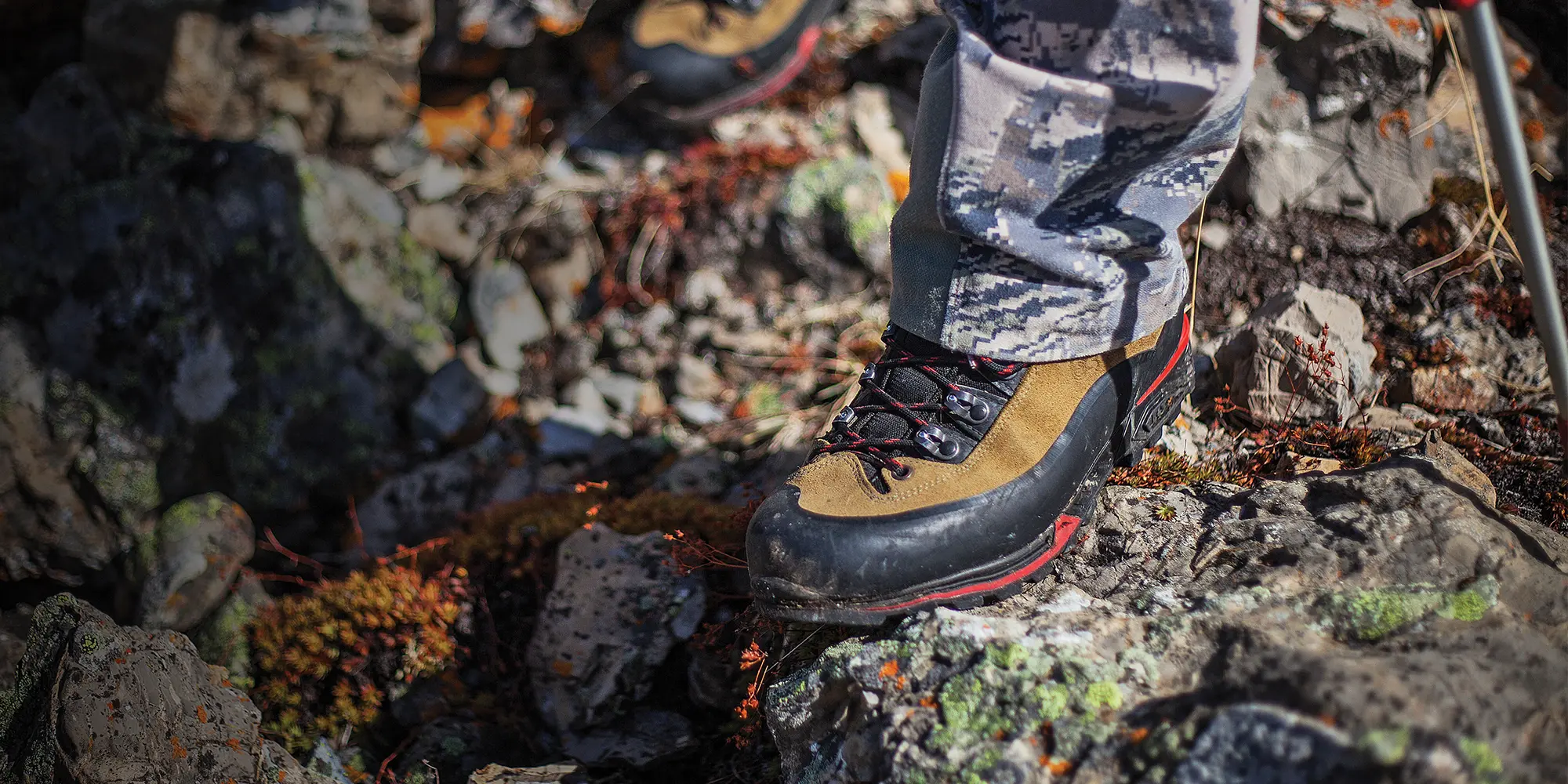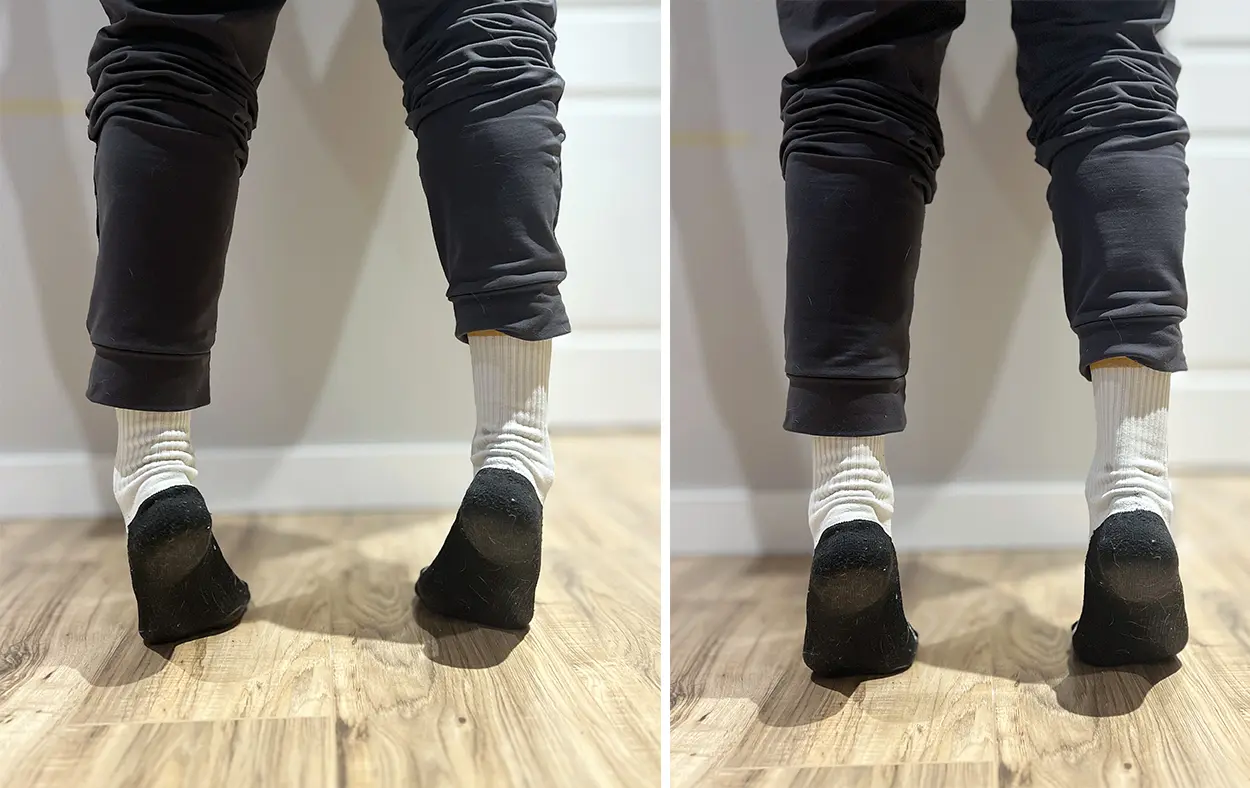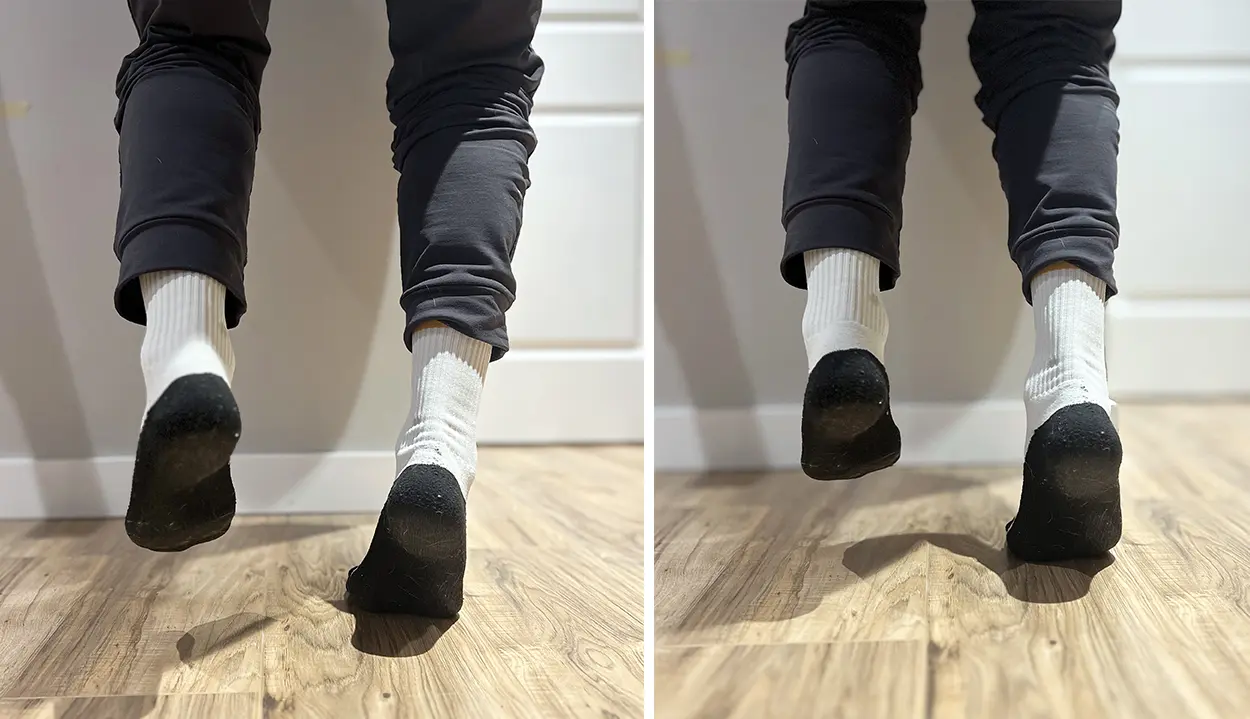
NOTICE: Certain links on this post may earn a commission for Western Hunter Magazine from Amazon or our other affiliate partners when you make a purchase. Thank you for your support.
Hiker’s Hooves:
If you’ve been following my 2023 articles, we’ve arrived at the last broad topic in my series for Western Hunter Magazine: the foot. As it’s arguably the most under-examined and poorly understood area, this article dives deep into foot health. For those dealing with hot spots, heel pain, plantar fasciitis, knee pain, toenail issues, or foot cramps, the common response involves getting shoe inserts and resting. However, the reality is that a thorough assessment of the foot, both passively and actively, is crucial. Specific exercises, progressing based on individual needs, are key, especially for those engaged in activities like running, jumping, or backcountry pursuits.
Let’s start with the fundamental understanding that the foot consists of two main parts – the hindfoot and the forefoot. These two parts, the hindfoot (heel and ankle) and forefoot (toes and metatarsals), work together, playing distinct yet interconnected roles in providing stability, shock absorption, and propulsion during activities like hiking.
Hindfoot Function
1. Stability and Shock Absorption
The hindfoot, comprising the heel and ankle, offers stability on uneven terrain, preventing ankle rolls and sprains during activities like hiking on rocky surfaces. The robust structure of the heel acts as a shock absorber, mitigating impact forces during descents and each step.
2. Weight Distribution
The hindfoot is responsible for distributing body weight evenly, and it’s crucial for maintaining balance and preventing excessive pressure on specific areas of the foot.
3. Ankle Mobility
It also enables dorsiflexion and plantarflexion, allowing adaptation to changes in terrain, vital for a hiker’s foot positioning on inclines and declines.
Forefoot Function
1. Propulsion
The forefoot, especially the toes and metatarsals, plays a key role in pushing off the ground during each step, providing necessary propulsion during activities like ascending slopes.
2. Toe Grip and Balance
Toes contribute to gripping the ground, enhancing balance on uneven surfaces and working in harmony with the hindfoot to prevent slips or falls.
3. Terrain Adaptation
The forefoot is responsible for adapting to changes in the hiking surface, providing a solid platform on flat terrain and a pronounced flexion on inclines for gripping and ascending.
4. Sensitivity and Feedback
The forefoot, rich in nerve endings, provides sensory feedback crucial for detecting variations in terrain and making real-time adjustments to foot placement.
In summary, both the hindfoot and forefoot collaborate to offer a stable, adaptive, and propulsive foundation during hiking. The hindfoot excels in stability and shock absorption, while the forefoot contributes to propulsion, balance, and adaptability on diverse terrains.
Foot Rolling
Now, let’s address a common issue – rolling to the outside of the foot throughout the propulsion and toe-off phase. A simple test-and-exercise routine can help address this concern.

Left: Incorrect form with push off being over the pinky toe.
Right: Correct form with the push off being over the big toe joint (MTB)

Left: Incorrect form with push off being over the pinky toe.
Right: Correct form with the push off being over the big toe joint (MTB)
Test: Calf Raise
- Perform a calf raise with hands on a wall or surface for stability.
- Do 10-15 calf raises with straight legs.
- Follow with 10-15 calf raises with bent knees.
- Transition to 5-10 single-leg calf raises with a straight and bent knee.
Exercise: Calf Raise Correction
- Take a video of your calf raises to check if weight stays over the big toe joint.
- If rolling to the outside (over the 4th or 5th toe), perform 60-100 calf raises daily with a ball squeezed between heels and knees bent or straight.
- Progress to single-leg calf raises, ensuring weight remains over the big toe knuckle.
Tip: Strengthening improves biomechanics, reducing hotspots and blisters during trips.
Tibialis Posterior Muscle
The tibialis posterior muscle, often overlooked, plays a vital role in foot and ankle stabilization during the gait cycle. Strengthening this muscle is crucial for overall foot biomechanics.
Conveniently, the exercise to activate and strengthen the tibialis posterior muscle is the same as above. If you find yourself wanting to work on tibialis posterior strengthening or you have pain on the inside of the shin/behind the medial malleolus, perform the calf raise correction exercise as described above.
Foot Control
Controlling the foot involves simple yet effective drills.
1. Big Toe/Little Toe Control: Lift little toes while keeping big toes down and vice versa. Cross legs and use fingers between toes to flex and extend ankles, enhancing sensory input.
2. Toe Threading: Flex and extend ankles using fingers between toes, improving sensory and motor input.
3. Toe Splay Exercise: Sit with bare feet, keeping big toes down, lift little toes and vice versa.
Foot Mobility
Wear toe spacers at home (barefoot) for 10 minutes to three hours, gradually increasing. This improves forefoot splaying during push-off.
Foam Rolling
Roll calves, shins, and quads regularly using a foam roller or trigger point ball.
1. Gastroc and Soleus: Roll from ankles to knees, adjusting pressure for 1-2 minutes.
2. Anterior Tibialis (Shins): Roll along shins, focusing on tender spots for 1-2 minutes.
3. Quads: Roll from knees to hips, targeting inner and outer quads for 1-2 minutes.
Tip: Consistent foam rolling enhances flexibility and reduces muscle tightness.
Toe Spacer Recommendation
Purchase toe spacers online and wear them around the house (without shoes) to enhance forefoot flexibility and splay.
Hiker’s Hooves
Prioritize foot health for optimal performance and comfort during activities like hiking. Simple tests, exercises, and self-care routines can significantly improve foot biomechanics, reduce discomfort, and enhance overall stability. Your feet are your foundation – treat them well.
While the facets of foot health are indeed numerous, let’s delve deeper into the intricacies. Often overshadowed in the realm of overall well-being, our feet silently bear the weight of our daily activities. This article serves as a gateway to understanding and rectifying the often-neglected issues related to foot health. Consider this an invitation to explore and address the intricacies of foot care for the robust foundation they provide.
Imagine returning triumphantly from a challenging sheep hunt only to find yourself compromised during the subsequent elk hunt due to debilitating blisters. It’s a scenario that underscores the importance of prioritizing foot health. So, let’s not only scratch the surface but also unravel the layers of knowledge that contribute to resilient and reliable feet.
In our journey, we’ve discussed the biomechanics of the foot, the interconnected roles of the hindfoot and forefoot, and the significance of muscles like the tibialis posterior. These aspects form the bedrock of a stable and propulsive gait during activities like hiking. The test-and-exercise routines provided serve as practical tools for self-assessment and improvement, ensuring your feet are up to the challenges presented by varied terrains.
Yet, our exploration doesn’t end here. The top problem identified – rolling to the outside of the foot – introduces a targeted test-and-exercise regimen. The emphasis on maintaining alignment over the big toe joint is pivotal for preventing issues during the propulsion and toe-off phases. Committing to the recommended exercises can significantly enhance biomechanics and reduce discomfort during prolonged activities.
We’ve also touched on the often-overlooked tibialis posterior muscle and its critical role in foot stabilization. Recognizing its significance and incorporating exercises to strengthen it can lead to improved overall foot and ankle function.
Transitioning to the control of the foot, we’ve introduced simple drills that gauge and enhance your ability to manipulate your toes – a seemingly mundane yet crucial aspect of intrinsic foot muscle control. The exercises provided serve as practical steps towards achieving better mind-muscle coordination, a foundational element for activities like lifting, jumping, hiking, and running.
This is a reminder, as consistent as the rhythmic stride during a hike, to foam roll regularly. The calves, shins, and quads demand attention, and the provided techniques offer a roadmap for effective self-care. This routine, though often reiterated, is a cornerstone for improving flexibility, reducing muscle tightness, and enhancing overall lower-leg health.
For those ready to take an extra step, the recommendation to wear toe spacers adds a layer of subtlety. A simple act like allowing your toes to splay naturally contributes to improved forefoot flexibility and facilitates a smoother push-off during walking or hiking. An investment of time in this seemingly small practice can yield significant benefits in the long run.
Conclusion
As we unravel the complexities of foot health, it becomes evident that there’s always more to explore. While we’ve covered substantial terrain, there are myriad nuances waiting to be addressed in future discussions. The message is clear – our feet are foundational to our adventures, and overlooking their well-being can have cascading effects. So, let this be a call to action. Review, engage, and get to work on your feet. Ensure they are not just supporting you but thriving, ready for the challenges that lie ahead. After all, a journey of a thousand miles begins with a solid step – make sure yours is up to the task.

